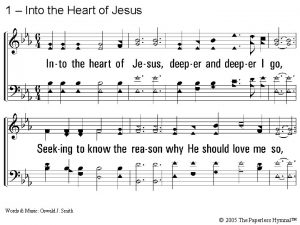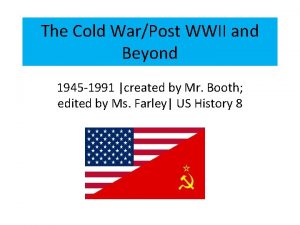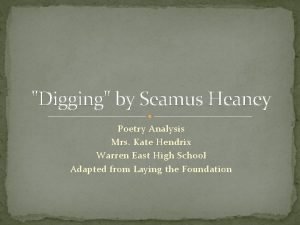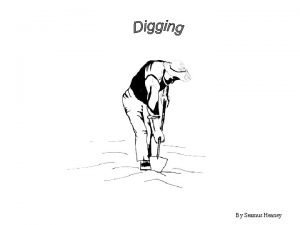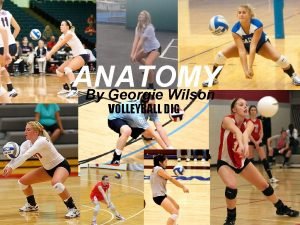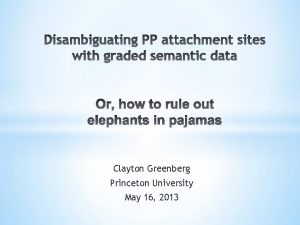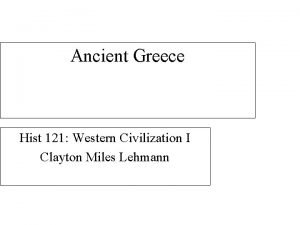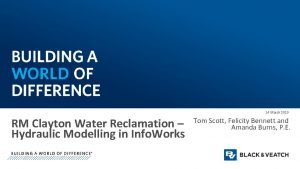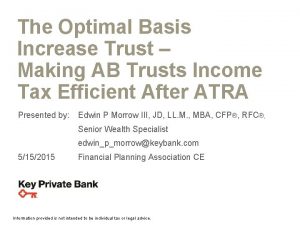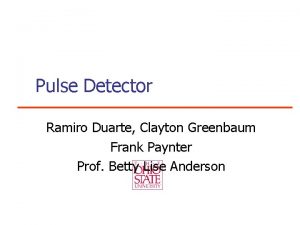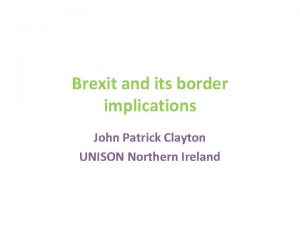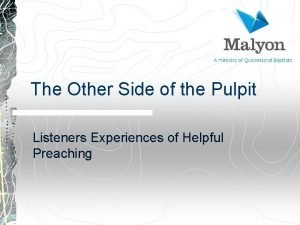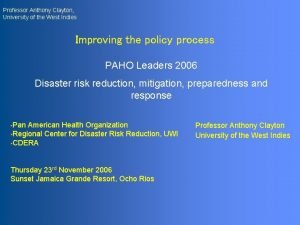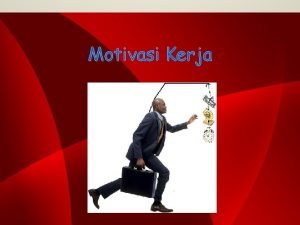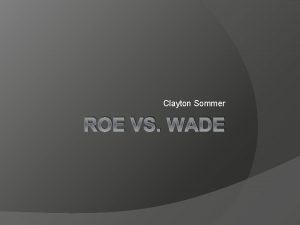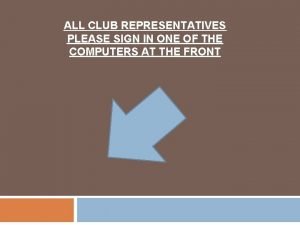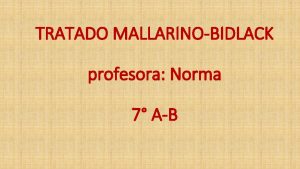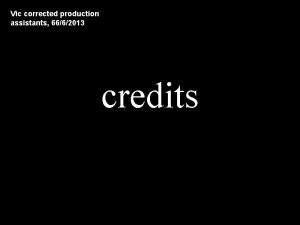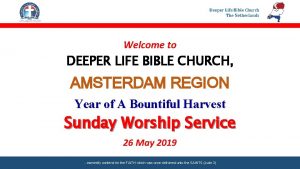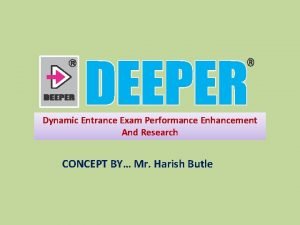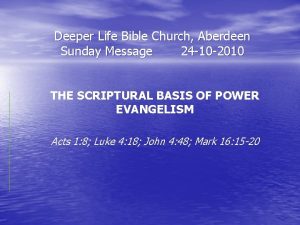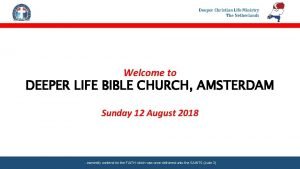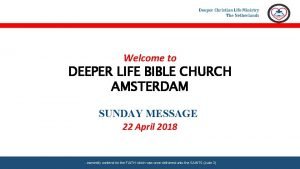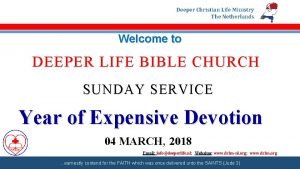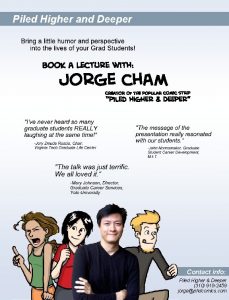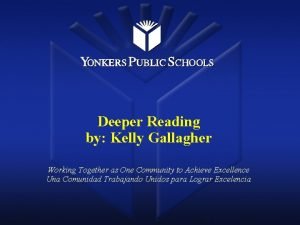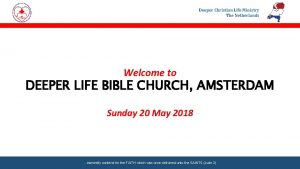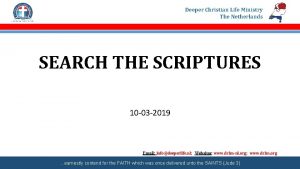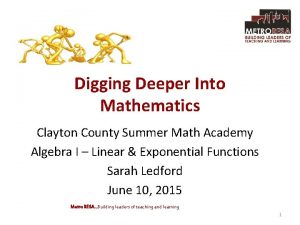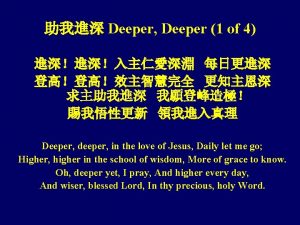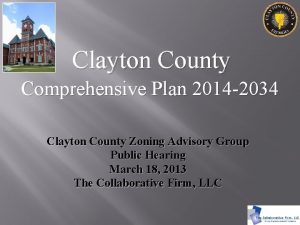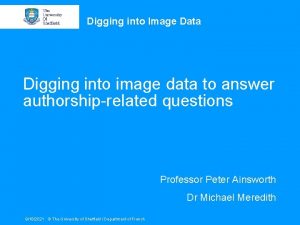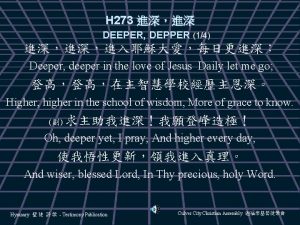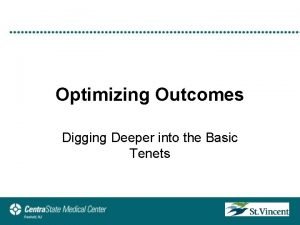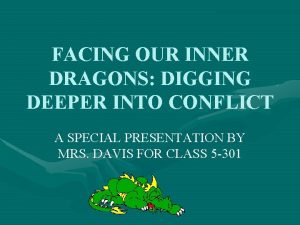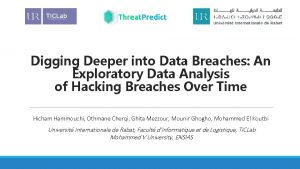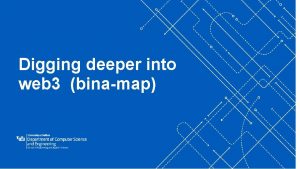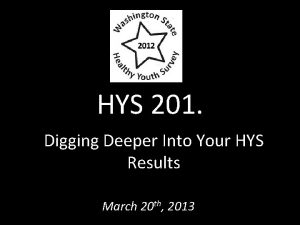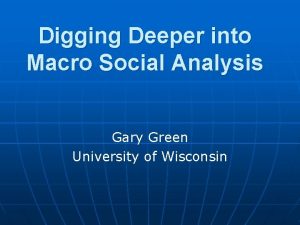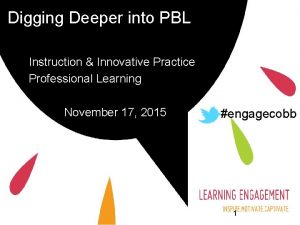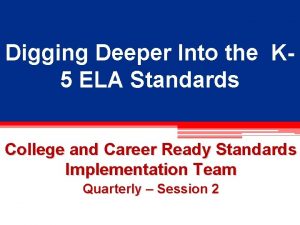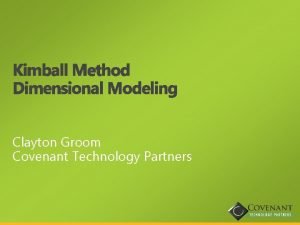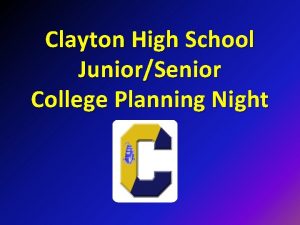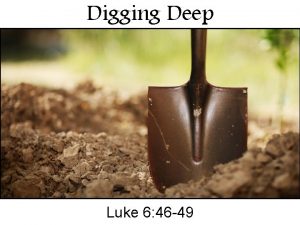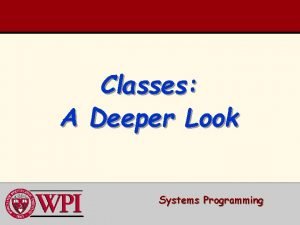Digging Deeper Into Mathematics Clayton County Summer Math

















































- Slides: 49

Digging Deeper Into Mathematics Clayton County Summer Math Academy Algebra I – Intro & Functions Sarah Ledford June 8, 2015 Metro RESA. . . Building leaders of teaching and learning 1

Digging Deeper Into Mathematics Talk at your table about what the image represents related to the summer academy. Metro RESA. . . Building leaders of teaching and learning 2

Introductions and Expectations • Introduce yourself: – name, school, grade level AND • Expectations for the PL Metro RESA. . . Building leaders of teaching and learning 3

Outcomes: • Dig into the domains to determine the development of the content across the grade levels • Work tasks that help develop conceptual understanding • Discuss the integration of the Standards for Mathematical Practice (SMPs) • Identify teacher actions to develop content and mathematical practices while addressing TKES Metro RESA. . . Building leaders of teaching and learning 4

TKES - Standards 1 – Professional Knowledge 2 – Instructional Planning 3 – Instructional Strategies 4 – Differentiated Instruction 5 – Assessment Strategies 6 – Assessment Uses 7 – Positive Learning Environment 8 – Academically Challenging Environment 9 – Professionalism 10 - Communication Metro RESA. . . Building leaders of teaching and learning 5

Group Norms and Housekeeping Group Norms: • Participate and share • Participate with an open mind • Ask questions • Work toward solutions • Engage in respectful discourse Housekeeping: • Phone calls • Rest rooms • Breaks • Lunch Metro RESA. . . Building leaders of teaching and learning 6

Agenda • Task related to domain • Vertical Alignment (Progressions documents) • Tasks related to the concept/unit – Alignment to GSE content and SMPs • Resources Metro RESA. . . Building leaders of teaching and learning 7

Opener Write an equation that involves two different operations and has the solution x = -6. Source: http: //books. heinemann. com/math/ - Middle – Patterns, Functions, & Algebra – Solving Equations Metro RESA. . . Building leaders of teaching and learning 8

Opener After everyone has put a solution up, let’s look at some actual student solutions that were written in Georgia. What do you think about these? Metro RESA. . . Building leaders of teaching and learning

Metro RESA. . . Building leaders of teaching and learning

Metro RESA. . . Building leaders of teaching and learning

Metro RESA. . . Building leaders of teaching and learning

Metro RESA. . . Building leaders of teaching and learning

Metro RESA. . . Building leaders of teaching and learning

Opener Review • This is an example of the thought-provoking experiences that will be explored throughout the training. • Brief activities/tasks can develop – content – conceptual understanding, and – mathematical practices Metro RESA. . . Building leaders of teaching and learning 15

What We Know Talk at your table about what you know about the following related to the Georgia Standards for Excellence (GSE) in Mathematics. 1. Design and Organization of the standards 2. Domains for 6 – 8 3. Standards for Mathematical Practice Metro RESA. . . Building leaders of teaching and learning 16

Design and Organization Each grade level begins with a page describing the critical areas. In Grade 6, instructional time should focus on four critical areas: (1) connecting ratio and rate to whole number multiplication and division and using concepts of ratio and rate to solve problems; (2) completing understanding of division of fractions and extending the notion of number to the system of rational numbers, which includes negative numbers; (3) writing, interpreting, and using expressions and equations; and (4) developing understanding of statistical thinking. Content standards for Grade 6 are arranged within the following domains and clusters: Expressions and Equations • Apply and extend previous understandings of arithmetic to algebraic expressions. • Reason about and solve one-variable equations and inequalities. • Represent and analyze quantitative relationships between dependent and independent variables. Metro RESA. . . Building leaders of teaching and learning 17

Format of High School Standards Algebra ual t p e M) c Con ory (5+ in a g e m Cat Do Seeing Structure in Expressions Interpret the structure of expressions. 1. ing d a e H r Cluste Code A-SSE Interpret expressions that represent a quantity in terms of its context. a. Interpret parts of an expression, such as terms, factors, and coefficients. Modeling Symbol b. Interpret complicated expressions by viewing one or more of their parts as a single entity. For example, interpret P(1+r) n as the product of P and a factor not depending on P. 2. Use the structure of an expression to identify ways to rewrite it. For example, see x 4 – y 4 as (x 2)2 – (y 2)2, thus recognizing it as a difference of squares that can be factored as (x 2 – y 2)(x 2 + y 2). Write expressions in equivalent forms to solve problems. 3. Standard Choose and produce an equivalent form of an expression to reveal and explain properties of the quantity represented by the expression. a. Factor a quadratic expression to reveal the zeros of the function it defines. A. SSE. 2 b. Complete the square in a quadratic expression to reveal the maximum or minimum value of the function it defines. c. Use the properties of exponents to transform expressions for exponential functions. For example the expression 1. 15 t can be rewritten as (1. 151/12)12 t ≈ 1. 01212 t to reveal the approximate equivalent monthly interest rate if the annual rate is 15%. 4. Derive the formula for the sum of a finite geometric series (when the common ratio is not 1), and use the formula to solve problems. For example, calculate mortgage payments. Metro RESA. . . Building leaders of teaching and learning Bibb County 18

Domains for K-8 / Conceptual Categories for High School Metro RESA. . . Building leaders of teaching and learning 19

Dom ains Conceptual Categories & Domains Number & Quantity Algebra Functions Geometry Statistics & Probability The Real Number System Seeing Structure in Expressions Interpreting Functions Congruence Interpreting Categorical and Quantitative Data Quantities Arithmetic with Polynomials & Rational Expressions Building Functions The Complex Number System Creating Equations Reasoning with Equations and Inequalities Vector and Matrix Quantities g n i l e d Similarity, Right Triangles, and Trigonometry Making Inferences and Justifying Conclusions Linear, Quadratic and Exponential Models Circles Conditional Probability and the Rules of Probability Trigonometric Functions Expressing Geometric Properties with Equations Using Probability to Make Decisions Mo Geometric Measurement and Dimension Modeling with Geometry Metro RESA. . . Building leaders of teaching and learning 20

What SMPs were addressed? Metro RESA. . . Building leaders of teaching and learning Ga. DOE 7 th grade CCGPS Overview Presentation 21

SMPs aligned… Metro RESA. . . Building leaders of teaching and learning 22

My best advice to anyone preparing to implement the Common Core State Standards (CCSS) for mathematics is to get students talking and writing about their work. Regardless of your stance on the CCSS, being an effective communicator is a valuable and often challenging life skill. - Robert Kaplinsky Metro RESA. . . Building leaders of teaching and learning 23

Developing Understanding • More effective learning will occur when using a combination of concrete, pictorial (representational) , and symbolic. Bruner Metro RESA. . . Building leaders of teaching and learning 24

**Mastery of basic facts is required. Metro RESA. . . Building leaders of teaching and learning Slide from Pam Hartley, “Singapore Method of Problem Solving, GCSM Feb. 2011

Bigger Picture for a Balanced Curriculum • Conceptual Understanding – Concrete – Pictorial – Abstract • Procedural – leads to fluency – Processes – Use of algorithms • Application Metro RESA. . . Building leaders of teaching and learning 26

Back to our Opener Write an equation that involves two different operations and has the solution x = -6. Source: http: //books. heinemann. com/math/ - Middle – Patterns, Functions, & Algebra – Solving Equations Metro RESA. . . Building leaders of teaching and learning 27

Task Review • What GSE (content) was addressed? – Domain, cluster, and standards • What SMPs were addressed? Metro RESA. . . Building leaders of teaching and learning 28

Algebra I GSE A. CED. 1 Create equations and inequalities in one variable and use them to solve problems. A. REI. 1 Using algebraic properties and the properties of real numbers, justify the steps of a simple, one-solution equation. A. REI. 3 Solve linear equations and inequalities in one variable including equations with coefficients represented by letters. Metro RESA. . . Building leaders of teaching and learning 29

6 -8 GSE 6. EE. 1 Write and evaluate numerical expressions involving whole-number exponents. 6. EE. 3 Apply the properties of operations to generate equivalent expressions. 6. EE. 4 Identify when two expressions are equivalent. 6. EE. 5 Understand solving an equation… Metro RESA. . . Building leaders of teaching and learning 30

6 -8 GSE 7. EE. 1 Apply properties of operations as strategies to add, subtract, factor, and expand linear expressions with rational coefficients. 7. EE. 3 Solve multistep … mathematical problems posed with positive and negative rational numbers in any form by applying properties of operations… Metro RESA. . . Building leaders of teaching and learning 31

6 -8 GSE 7. EE. 4 Use variables to represent quantities in a realworld or mathematical problem, and construct simple equations and inequalities to solve problems by reasoning about the quantities. 8. EE. 7 Solve linear equations in one variable. Metro RESA. . . Building leaders of teaching and learning 32

What SMPs were addressed? Metro RESA. . . Building leaders of teaching and learning Ga. DOE 7 th grade CCGPS Overview Presentation 33

LEGO Code Metro RESA. . . Building leaders of teaching and learning 34

Task Review • What GSE (content) was addressed? – Domain, cluster, and standards • What SMPs were addressed? Metro RESA. . . Building leaders of teaching and learning 35

Alg I GSE F. IF. 1 Understand that a function from one set (the input, called the domain) to another set (the output, called the range) assigns to each element of the domain exactly one element of the range, i. e. each input value maps to exactly one output value. If f is a function, x is the input (an element of the domain), and f(x) is the output (an element of the range). F. IF. 2 Use function notation, evaluate functions for inputs in their domains, and interpret statements that use function notation in terms of a context. Metro RESA. . . Building leaders of teaching and learning 36

6 -8 GSE 8. F. 1 Understand that a function is a rule that assigns to each input exactly one output. The graph of a function is the set of ordered pairs consisting of an input and the corresponding output. Metro RESA. . . Building leaders of teaching and learning 37

From Good Questions 5 -8 In Out aardvark a giraffe a • What is the rule? hippo o • Add three more pairs of In and Out values. otter ? ? e ? ? ? • Complete the chart. Metro RESA. . . Building leaders of teaching and learning

From Good Questions 5 -8 In Out 5 8 10 13 3 6 • Write your rule in words and as an equation. 0 ? ? 45 • Add three more pairs of In and Out values. ? ? • Create sequence with inputs 1, 2, 3, 4, … ? ? • Complete the chart. • What is the rule? Metro RESA. . . Building leaders of teaching and learning

From Good Questions 5 -8 In Out 0 1 1 2 -1 1/2 4 ? ? ? • Add three more pairs of In and Out values. ? 128 • Create sequence with inputs 1, 2, 3, 4, … ? ? 5 32 • Complete the chart. • What is the rule? • Write your rule in words and as an equation. Metro RESA. . . Building leaders of teaching and learning

Task Review • What GSE (content) was addressed? – Domain, cluster, and standards • What SMPs were addressed? Metro RESA. . . Building leaders of teaching and learning 41

Alg I GSE F. IF. 1 Understand that a function from one set (the input, called the domain) to another set (the output, called the range) assigns to each element of the domain exactly one element of the range, i. e. each input value maps to exactly one output value. If f is a function, x is the input (an element of the domain), and f(x) is the output (an element of the range). F. IF. 2 Use function notation, evaluate functions for inputs in their domains, and interpret statements that use function notation in terms of a context. Metro RESA. . . Building leaders of teaching and learning 42

Alg I GSE That last simple question about creating a sequence allows us to also touch on… F. IF. 3 Recognize that sequences are functions, sometimes defined recursively, whose domain is a subset of the integers. F. BF. 2 Write arithmetic and geometric sequences recursively and explicitly, use them to model situations, and translate between the two forms. Metro RESA. . . Building leaders of teaching and learning 43

Alg I GSE F. LE. 1 Distinguish between situations that can be modeled with linear functions and with exponential functions. F. LE. 2 Construct linear and exponential functions, including arithmetic and geometric sequences, given a graph, a description of a relationship, or two inputoutput pairs (include reading these from a table). Metro RESA. . . Building leaders of teaching and learning 44

Cell Phones Let f(t) be the number of people, in millions, who own cell phones t years after 1990. Explain the meaning of the following statements. A. f(10) = 100. 3 B. f(a) = 20 C. f(20) = b D. n = f(t) Problem from Illustrative Mathematics Metro RESA. . . Building leaders of teaching and learning 45

Sweet Tater You put a sweet potato in the oven. After 45 minutes, you take it out. Let f(t) be the temperature of the sweet potato t minutes after you placed it in the oven. Explain the meaning of the statement in everyday language. A. f(0) = 65 B. f(5) < f(10) C. f(40) = f(45) D. f(45) > f(60) E. f(-20) = ? F. f(? ) = 10, 000 Problem from Illustrative Mathematics Metro RESA. . . Building leaders of teaching and learning 46

Task Review • What GSE (content) was addressed? – Domain, cluster, and standards • What SMPs were addressed? Metro RESA. . . Building leaders of teaching and learning 47

Alg I GSE F. IF. 1 Understand that a function from one set (the input, called the domain) to another set (the output, called the range) assigns to each element of the domain exactly one element of the range, i. e. each input value maps to exactly one output value. If f is a function, x is the input (an element of the domain), and f(x) is the output (an element of the range). F. IF. 2 Use function notation, evaluate functions for inputs in their domains, and interpret statements that use function notation in terms of a context. Metro RESA. . . Building leaders of teaching and learning 48

Alg I GSE “Sweet Tater” includes inequalities so we can now include some of those standards as well… A. CED. 3 Represent constraints by … inequalities … and interpret data points as possible (i. e. a solution) or not possible (i. e. a non- solution) under the established constraints. Metro RESA. . . Building leaders of teaching and learning 49
 Into the heart of jesus deeper and deeper i go
Into the heart of jesus deeper and deeper i go Vietnam war at home webquest answers
Vietnam war at home webquest answers Seamus heaney poetry analysis
Seamus heaney poetry analysis Between my finger and my thumb the squat pen rests
Between my finger and my thumb the squat pen rests Volleyball digging
Volleyball digging Mississippi burning character analysis
Mississippi burning character analysis James russell odom and james clayton lawson
James russell odom and james clayton lawson Russell odom and clay lawson
Russell odom and clay lawson Clayton greenberg
Clayton greenberg Clayton atreus
Clayton atreus Atlanta rm clayton water reclamation plant
Atlanta rm clayton water reclamation plant What is a bypass trust
What is a bypass trust Clayton greenbaum
Clayton greenbaum John patrick clayton
John patrick clayton Clayton antitrust act
Clayton antitrust act Lockheed martin clayton
Lockheed martin clayton Clayton fopp
Clayton fopp West clayton university
West clayton university Clayton alderfer
Clayton alderfer Paul clayton facebook
Paul clayton facebook Roe vs wade background
Roe vs wade background Clayton koobs
Clayton koobs Puntos fundamentales del tratado mallarino-bidlack
Puntos fundamentales del tratado mallarino-bidlack Susan clayton wooster
Susan clayton wooster Taffye benson clayton
Taffye benson clayton Go deeper in christ
Go deeper in christ Deeper life bible church messages
Deeper life bible church messages Dclm netherlands
Dclm netherlands Deeper christian life ministry live
Deeper christian life ministry live Deeper life search the scriptures volume 1
Deeper life search the scriptures volume 1 Deeper exam
Deeper exam Deeper life sunday message
Deeper life sunday message Deeper life netherlands
Deeper life netherlands Vaap curriculum framework
Vaap curriculum framework Deeper life bible church
Deeper life bible church Deeper life youth search the scripture
Deeper life youth search the scripture Growing deeper in god
Growing deeper in god Deeper life bible church netherlands
Deeper life bible church netherlands Deeper life netherlands
Deeper life netherlands Dclm netherlands
Dclm netherlands Netherlands
Netherlands Deeper life netherlands
Deeper life netherlands Deeper life canada
Deeper life canada Jesus lord of heaven
Jesus lord of heaven Deeperph
Deeperph Deep dive synonym
Deep dive synonym Kelly services netherlands
Kelly services netherlands Deeper life netherlands
Deeper life netherlands Deeper life netherlands
Deeper life netherlands Deeper life netherlands
Deeper life netherlands
